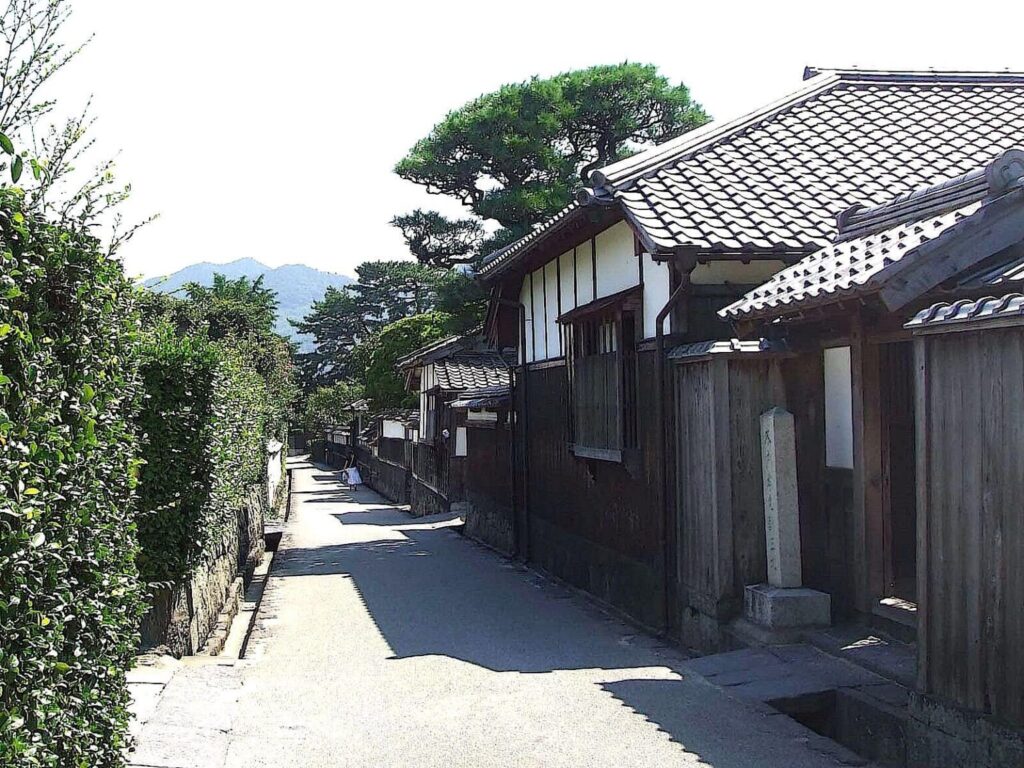The real Japan expert’s way of traveling is to go beyond the standard route of Tokyo, Mount Fuji, Kyoto, and Hiroshima. If you want to escape from the famous tourist spots and experience Japan as it really is, we recommend visiting Hagi and Tsuwano, which are close to Hiroshima and can be reached in less than 2.5 hours.
In the 1970s, traveling by train to castle towns and inn towns was a boom, and Hagi and Tsuwano became popular destinations for castle towns, along with the famous Magome-juku and Tsumago-juku on the Nakasendo Highway. Hagi and Tsuwano are also rich in nature; therefore, hiking and cycling are recommended for those who want to actively enjoy the natural beauty of the castle towns.
In this article, we will introduce ways to spend an active day in the natural beauty of the castle towns Hagi and Tsuwano. Let‘s have a look at how you can enjoy these two beautiful small castle towns that still retain the atmosphere of the Edo period.
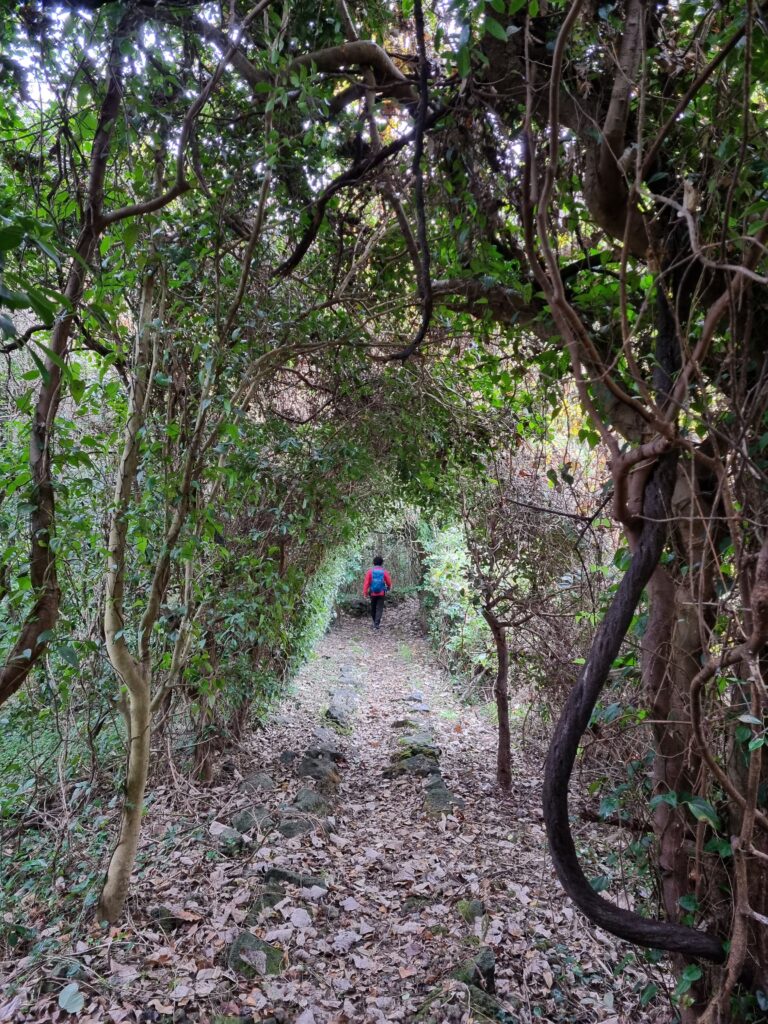
Hagi
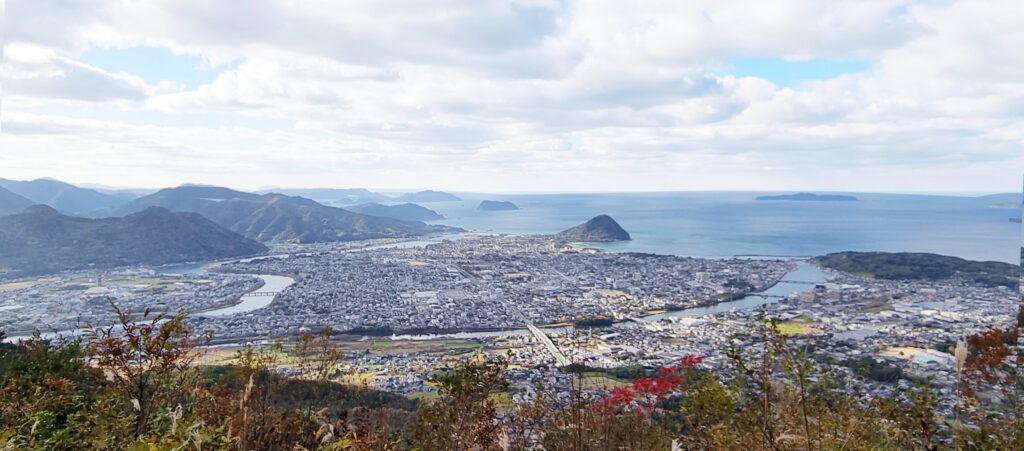
Yamaguchi Prefecture has emerged with the largest number of prime ministers. One reason for this is that modern Japan was created by people from a small town called Hagi. It were young samurai in their teens and twenties in Choshu (Hagi) who brought history to an end in the Edo period (1603-1867), when the Shogun and other Samurais ruled Japan and were left behind by the advanced civilization of the West, and in the Meiji period (1868-1912), when Japan rapidly modernized. For this reason, Hagi is famous for the Meiji Restoration and known among Japanese as a sacred place of revolution.
What is Hagi famous for?
Traditional craft: Hagi yaki

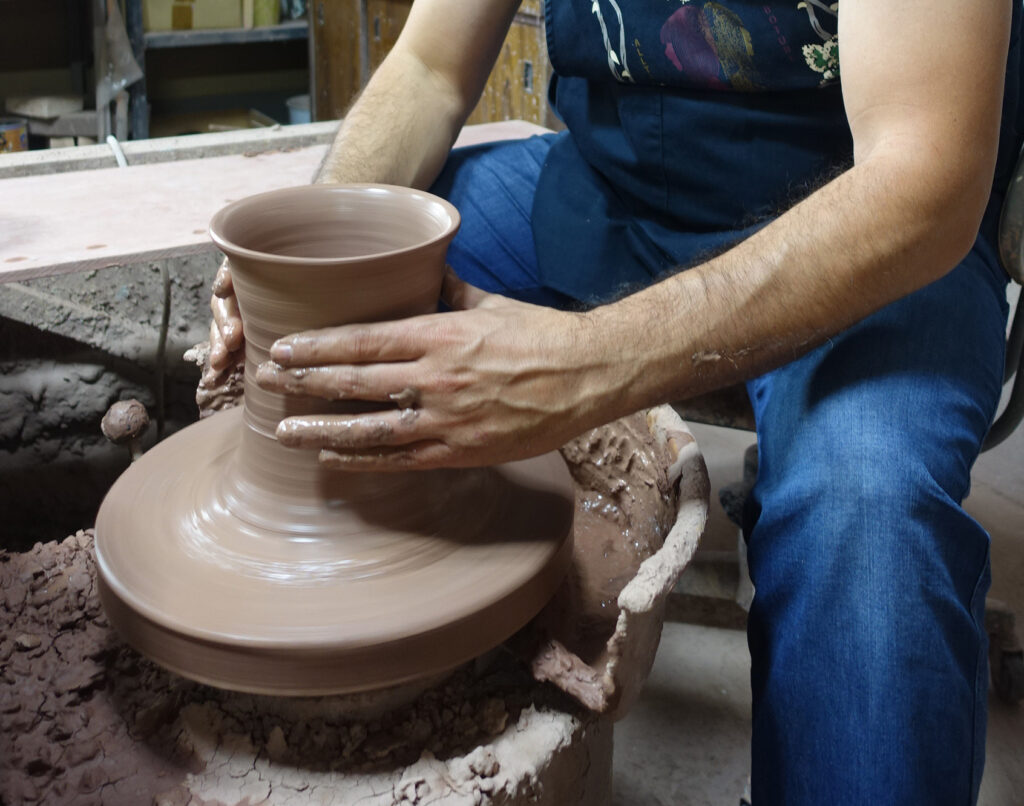
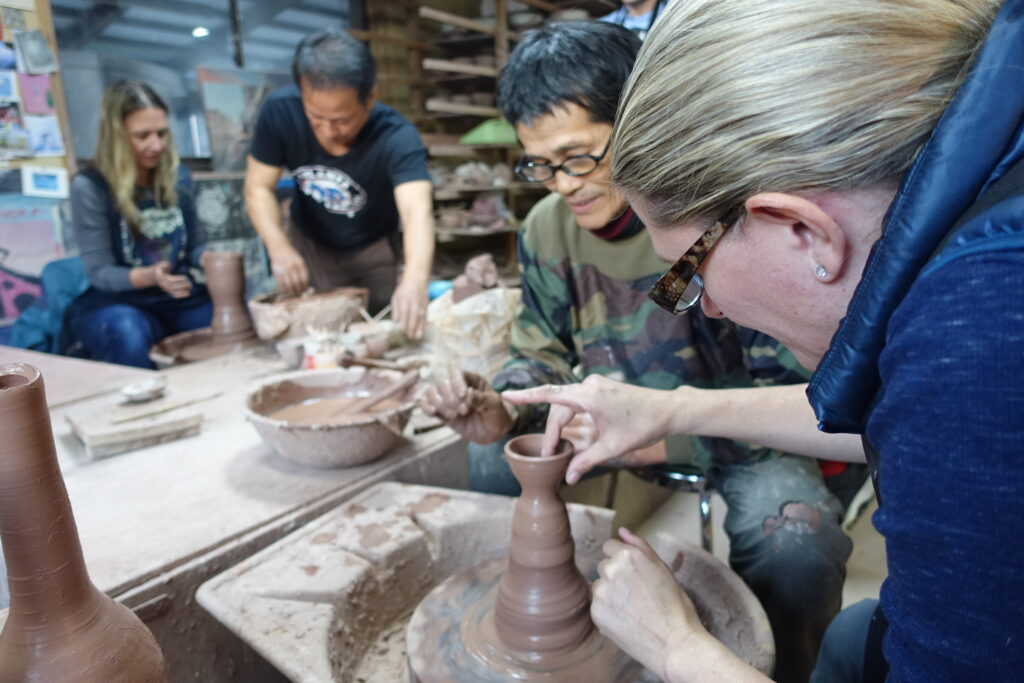
When you stroll through Hagi, you’ll come across numerous shops and studios showcasing a wide array of Hagi ware. Hagi pottery is a traditional Japanese ceramic ware originating from the town of Hagi in Yamaguchi Prefecture. Hagi pottery has a rich history dating back to the early 17th century, when potters from Korea settled in Hagi. Influenced by Korean techniques, Hagi ware evolved into a unique style characterized by its simplicity, textured surfaces, and warm colors. The pottery gained popularity among tea ceremony practitioners, and its tradition has continued for centuries, making Hagi an essential part of Japan’s ceramic heritage.
Townscape: Hamasaki

If you are interested in kimono and traditional Japanese architecture, take a stroll through the castle town of “Hamasaki”, which was the main port of Hagi Castle Town during the early part of the Edo period. Walk down the old streets and admire the residences of upper-class samurai, including important historical figures and wealthy merchants. Today, over 100 buildings are preserved as part of the historical district. Of these, 44 were built before 1868. The majority are well-maintained, and many have been adaptively repurposed for modern use.
The Edo period atmosphere still lingers in the streets of Hagi. There is a kimono rental shop around the area. Why don‘t you enjoy the traditional atmosphere of Hagi by wearing kimono while walking through Hagi’s old castle town – a registered World Heritage Site.
Hiking:
If you enjoy hiking, how about conquering the “Hagi Sanzan” (the three mountains in Hagi)? The three mountains of Hagi are Kasayama, Shizukiyama, and Tadokoyama, which are the symbols of Hagi.
Kasayama
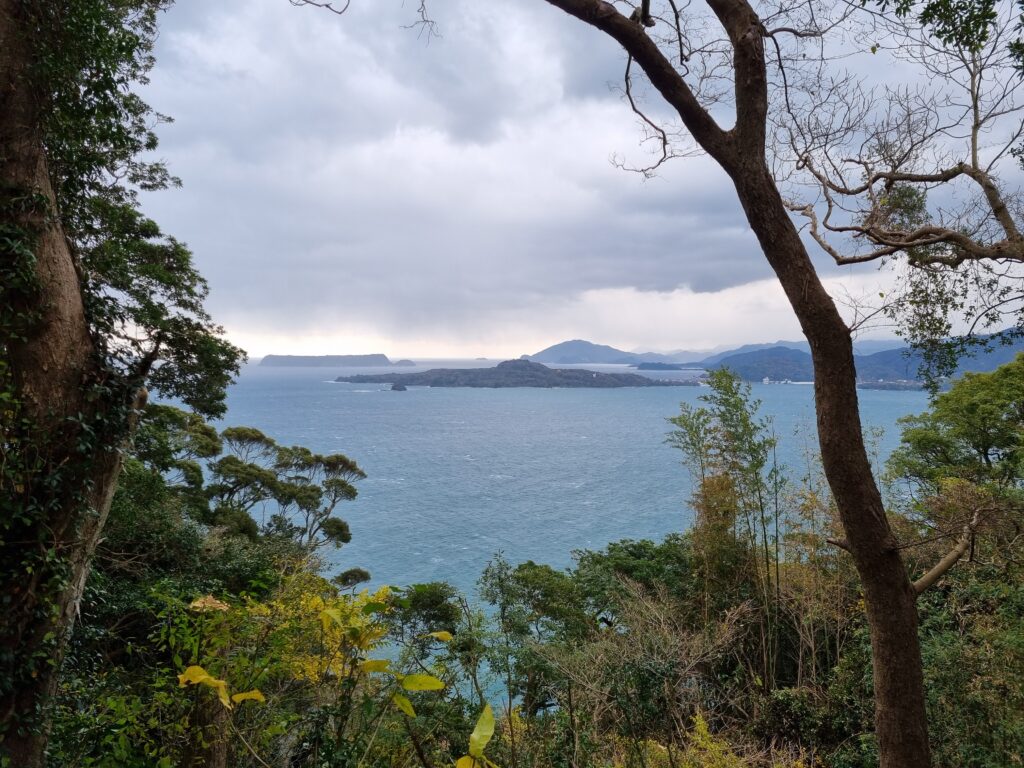
Kasasayama as seen from Shizukiyama
Level: Beginner
Distance: 4,1 km
Elevation: 112 m
Duration: approx. 1 h 20 mins
Kasayama is a small volcano with a nice pond at its base. Its name, which literally means “sedge hat mountain,” comes from the mountain’s resemblance to a type of wide-brimmed sedge hat called an ichimegasa. At the end of the trail at the summit, there is a small crater about 30 meters in diameter and depth, which visitors can descend into via a flight of stairs or circle around via a short path. Right next to the crater, there is a cozy cafe on the observatory. The view from there is breathtaking, and what is really pretty about this mountain is the changing scenery you can enjoy while walking, from bamboo trees to camellia groves over stone paths, followed by many bitter summer orange places.
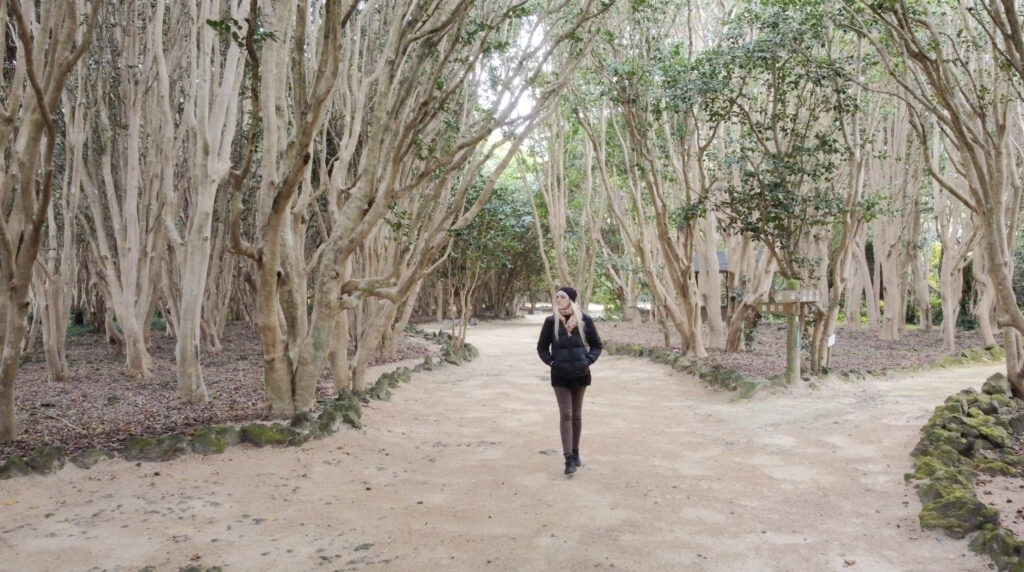
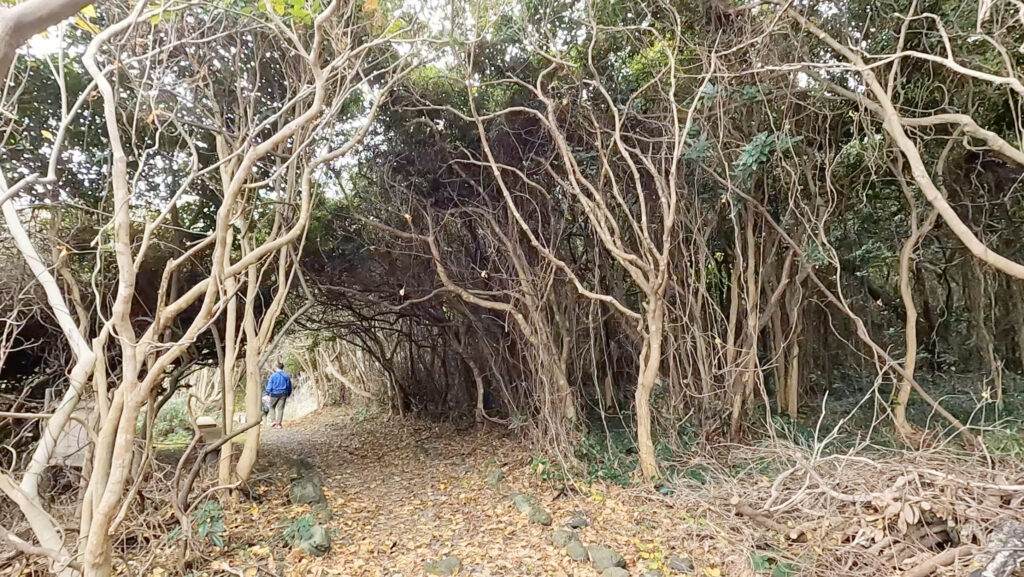
Shizukiyama

Hagi Castle Ruins and Shizukiyama
Level: Beginner
Distance: 2,1 km
Elevation: 143 m
Duration: approx. 50 mins
Shizukiyama is a 143-meter-high conical granite mountain protruding into the Sea of Japan at the northwestern edge of Hagi City and is connected to the land by a delta. The Mori clan established a castle at the foot of the mountain during the Keicho era (1596-1598), and built Tsumemaru (a fallback position in case of a siege) at the top. The Tsumenomaru itself is divided into two baileys ringed with stone walls and having multiple watchtowers. As the forest has been protected as a castle forest, there are many giant trees that are said to be over 600 years old, and it is a rare mature forest in Japan as a warm-zone broad-leaved forest, so it is designated as a national natural monument.
Tadokoyama
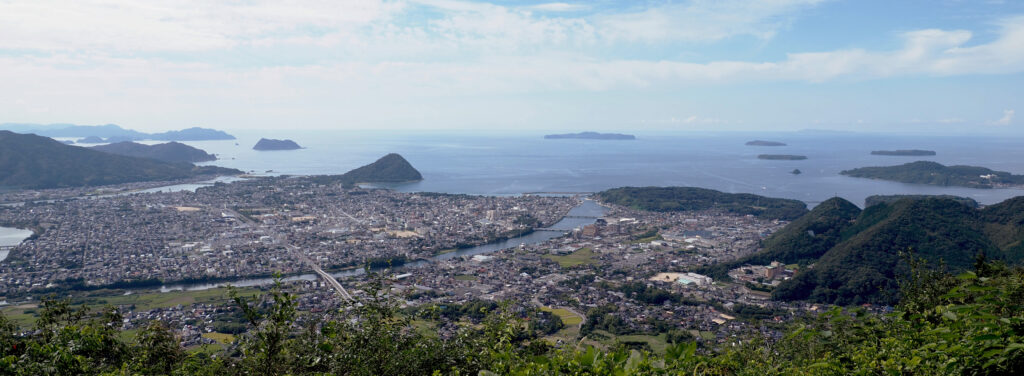
Over view from Tadokoyama
Level: Beginner
Distance: 3,4 km
Elevation: 373 m
Duration: approx. 2 h 39 mins
Mount Tadokoyama is a 373-meter-high mountain located southeast of Hagi City, and from the observatory at the top of the mountain, a panoramic view of the Hagi Delta can be seen. A walk up the mountain can be done from the Pottery Village Park in about 1 to 1.5 hours. In case you are not confident about your physical strength, you can drive up to the halfway point by taking a taxi or renting a car.
How about relaxing in an onsen (hot spring) after a long walking or hiking day? There are many lodging facilities with hot springs in Hagi; be sure to stay there and enjoy the hot springs.
Hagi Okan
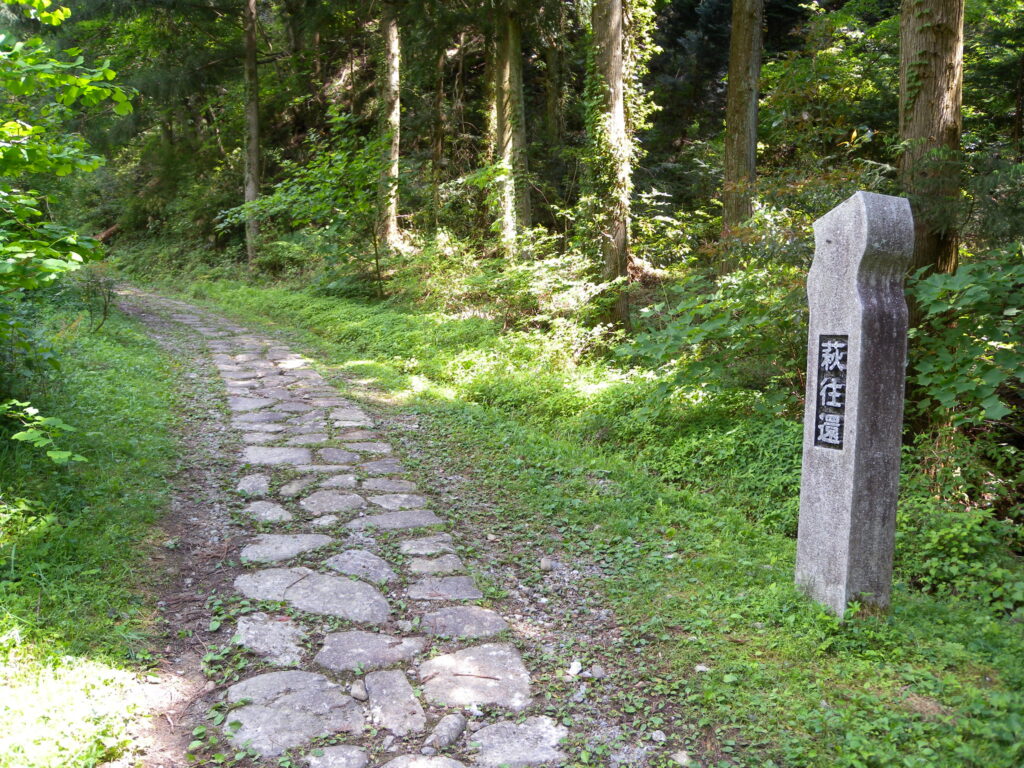
What is Hagi-Okan?
It is a 53km ancient road that connects Hagi on the Japan Sea and Mita-jiri (Hofu) on the Seto Inland Sea; the path once walked by samurai. During the end of the Edo period, it was frequented by young samurai, including those in their teens and twenties, who were revolutionaries involved in the Meiji Restoration.
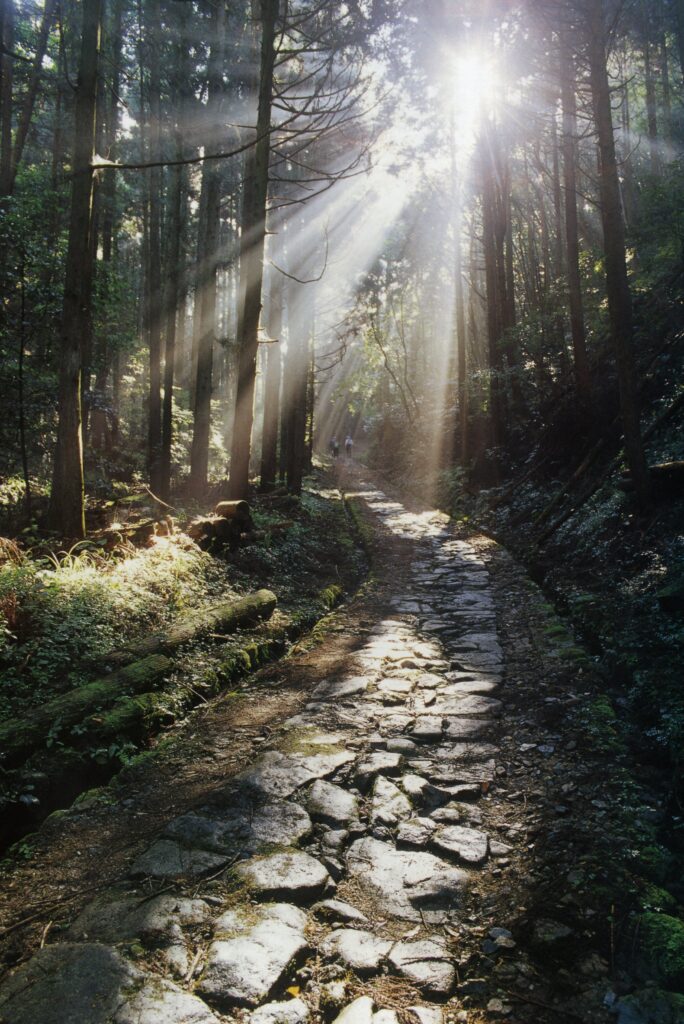
The samurai who arrived at Mita-jiri later worked tirelessly in Kyoto and Edo (present-day Tokyo) to initiate a revolution. These samurai, driven by fervent aspirations, aimed to bring an end to the old Japan dominated by the shogunate and samurai, which lagged behind the advanced civilizations of Europe and the United States. Their goal was to prevent Japan from becoming a colony of Western powers and to modernize, standing shoulder to shoulder with Western nations. In order to spark this revolution, the samurai with determined ambitions frequently traveled along the Hagi-Okan road.
Hagi-Okan played a significant role in the history of Japan as a road, and even now it can be walked, and it remains a popular route for walking. Additionally, beautiful cobblestones from the Edo period still exist on this ancient road, evoking a sense of historical romance.
Proceeding along the pleasant path where sunlight filters through the trees, you’ll come across a stone monument engraved with “Isshodani.” It is explained that the name comes from the challenging climb, where one would consume exactly one sho (a traditional Japanese unit of volume) of roasted beans while ascending the slope. As the name suggests, it is one of the most formidable sections of the Hagi-Ōkan, featuring a steep incline with a height difference of about 300 meters over approximately 2 kilometers. Some sections still preserve valuable cobblestones from the Edo period, making it a highlight of the Hagi-Ōkan that best captures the atmosphere of that era. Knowing that many individuals, including samurai from the end of the Edo period, walked this path adds a profound sense of nostalgia. Sasanami-ichi, designated as an important traditional building preservation district, prospered as a post town along the Hagi-Ōkan. The town’s layout still faintly remains, and local residents continue to inhabit the area. Living leisurely in the rural setting amidst nature allows you to catch a glimpse of the real countryside of Japan, different from Tokyo or Kyoto.
Local food & restaurant recommendations:
Seafood is the most famous local food in Hagi, but if you want to immerse yourself in the local area, try the local soul food called “Don Don,” an Udon fast food restaurant. You will be told that you are a connoisseur if you eat udon at “Don Don” in Hagi.
Access:
From Hiroshima:
From Hiroshima, it takes about 2.5 hours by train and bus. The bullet train goes from Hiroshima station to Shin-Yamaguchi station; after that, you can transfer to a bus that goes directly to Hagi.
From Tokyo & Osaka:
Hagi can also be reached directly from Tokyo and Osaka (by air: via Yamaguchi-Ube Airport, Hagi Iwami Airport). Both airports operate a direct taxi service to/from Hagi City (70-80 mins, must be reserved in advance). Alternatively, Hagi can be accessed by JR bus.
Another option is to access Hagi by bullet train & JR bus. Take the bullet train from Tokyo or Osaka to JR Shin-Yamaguchi Station. Directly outside of Shin-Yamaguchi Station there are bus services to Hagi (JR Bus and Bocho Bus, 70-90mins).
Hagi, Tsuwano PR Videos!



